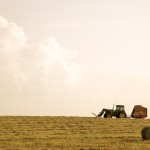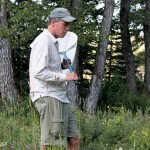
Boosting hay stand conditions

Range of byproduct feeds available for sheep

Learn how to benefit from sainfoin
A new sainfoin variety called AC Mountainview will allow producers to add alfalfa to their pastures without fear of bloat

Saving the environment one legume at a time
Condensed tannins reduce bloat and do a whole lot more besides

Alfalfa seed: a growing industry

Improve performance with a sweet treat for your cattle — afternoon-cut forage
Sugar concentration in forages peaks about 11 to 13 hours after sunrise — and can be as much as five per cent higher

Wild pollinators earn their keep on the farm
Wild pollinators may boost yields and help crops mature more uniformly, and also are a natural source of pest protection

New forage research papers available online
Three new papers look at tall fescue, barley after perennial forages, and slender wheat grass

It’s Canada’s biggest crop – but forage research remains a hard sell
There has been a dramatic drop in forage research, but it’s not just because producers could make more money growing canola

Don’t be fooled by imitations, Mountainview sainfoin not for sale yet
Forage producers are eager to get their hands on AC Mountainview, but it won’t be for sale until 2016

